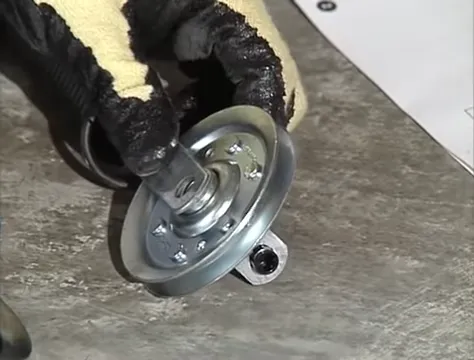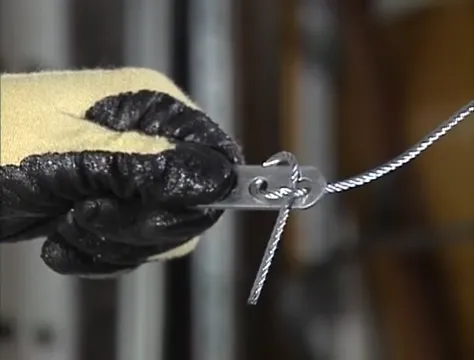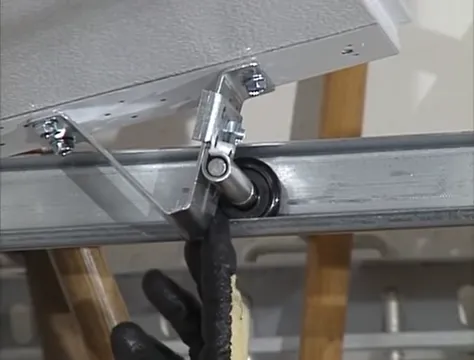To install springs on a garage door, start by releasing tension in the existing springs using a winding bar. Then, remove the old springs and install the new ones, making sure they are properly aligned and tensioned.
The Importance Of Garage Door Springs
The Importance of Garage Door Springs
Garage door springs play a crucial role in the smooth operation and safety of your garage door. They are responsible for lifting the heavy weight of the door, making it easy to open and close. Without properly functioning springs, your garage door may become difficult to operate, or worse, may not open or close at all.
Types of Garage Door Springs

| Spring Type | Description |
|---|---|
| Torsion Springs | Torsion springs are usually placed above the garage door and use torque to lift the door by winding and unwinding. |
| Extension Springs | Extension springs are typically mounted on either side of the garage door and expand and contract to assist with opening and closing. |
Common Problems with Garage Door Springs
- Spring Breakage: Over time, garage door springs can wear out and break, especially with frequent use. This can lead to the door becoming unbalanced or inoperable.
- Spring Deterioration: Springs can deteriorate due to rust, moisture, or exposure to extreme temperatures. This can cause them to lose their flexibility and effectiveness.
- Spring Misalignment: If the springs become misaligned or improperly installed, it can affect the door’s performance and may cause it to become jammed or stuck.
Consequences of Faulty or Broken Springs
Faulty or broken garage door springs can pose serious risks to both the door itself and anyone using the garage. These consequences include:
- Damage to the Door: A faulty spring can put excessive stress on the door, causing it to warp, bend, or even collapse.
- Injuries and Accidents: Broken springs can cause the garage door to suddenly slam shut, potentially causing injuries to individuals or damage to property.
- Security Concerns: A malfunctioning garage door can compromise the security of your home, leaving it vulnerable to break-ins and theft.
Regular maintenance and inspection of your garage door springs are essential to ensure their proper functioning. If you suspect any issues with your springs, it is recommended to consult a professional for inspection and repair.
Preparing For The Installation Process
Preparing for the Installation Process:
Tools and materials needed:
Safety precautions to consider:
Assessing the condition of existing springs:

Before installing springs on a garage door, it is important to properly prepare for the process. First, gather the necessary tools and materials, which may include a ladder, pliers, a tape measure, and replacement springs. It is critical to take safety precautions into consideration. This includes wearing protective eye gear and gloves to prevent injuries. When assessing the condition of existing springs, look for signs of wear and tear such as rust or fraying. It is crucial to replace springs that show signs of damage to ensure the garage door operates safely and smoothly. By following these steps, you can successfully install new springs on your garage door.
Step-by-step Guide To Installing Springs On A Garage Door
Replacing the springs on a garage door can be a daunting task, but with the right guidance, it can be done easily. The first step in installing new springs is to release the tension from the existing ones. This can be achieved by using winding bars to slowly unwind the springs and relieve the pressure. Once the tension is released, the next step is to remove the old springs. Care should be taken to ensure that the springs are handled safely to avoid injury. Finally, it is crucial to choose and purchase the right replacement springs for your garage door. Consider factors such as the weight and size of the door when selecting the springs.
Measuring And Ordering The Correct Springs
Measuring and Ordering the Correct Springs:
Understanding spring size and weight ratings is crucial when it comes to installing springs on a garage door. Properly measuring the existing springs and identifying their specifications is necessary before placing an order for new ones. To determine the correct spring type for your door, you should consider factors such as the weight of the door, the height of the garage, and the number of springs required for proper balancing.
Once you have gathered the necessary information, you can order the springs either online or from a local supplier. Many online retailers provide detailed guides and calculators to help you select the right springs based on your door’s specifications. If you prefer purchasing from a local supplier, make sure to provide them with the accurate measurements and specifications to ensure you receive the correct springs for your garage door.
Removing Existing Springs
Removing Existing Springs
Ensuring proper safety equipment is in place:
- Before starting the process, it is crucial to have the right safety equipment.
- Make sure to wear safety glasses, gloves, and sturdy shoes.
- It is also recommended to have a winding bar and a pair of pliers on hand.

Releasing tension and loosening hardware:
- First, identify the type of springs your garage door has, as this will determine the removal method.
- If you have torsion springs, it is important to release the tension using a winding bar.
- For extension springs, you will need to disconnect them from the pulley system.
- Next, loosen the hardware securing the springs to the brackets.
Removing the springs carefully:
- Once the tension is released and the hardware is loosened, carefully remove the springs from the brackets.
- Pay close attention to ensure the door is secured in the open position to prevent it from falling.
- It is recommended to have someone assist you during this step.
- Handle the springs with caution and avoid any sudden movements.
Remember, garage door springs can be dangerous if not handled properly. If you are unsure or uncomfortable with the process, it is always best to consult a professional.
Installing The Replacement Springs
Installing replacement springs on a garage door can be a daunting task, but with the right guidance, it can be done efficiently. Properly positioning the new springs is crucial to ensure the door functions smoothly. Start by attaching the springs to the door and track, making sure they are securely fastened. This will prevent any potential accidents or damage to the door and its components. Once the springs are attached, it’s important to adjust the tension to achieve the desired balance. This can be done by tightening or loosening the springs accordingly. Balancing the door is essential for its proper functioning and to extend its lifespan. Regularly inspecting the springs and maintaining their tension will ensure that your garage door operates safely and smoothly.
Testing And Ensuring Proper Functionality

Installing springs on a garage door is an important task that requires careful attention to detail. Once the installation is complete, it is crucial to test and ensure proper functionality of the door. One way to do this is by checking for smooth and balanced movement of the garage door. This can be done by manually lifting and lowering the door, paying close attention to any signs of sticking or uneven movement. Additionally, conducting a safety test is essential to ensure that the door stops and reverses when an object is detected in its path.
If any issues are identified during the testing process, it may be necessary to make adjustments for optimal performance. This can involve fine-tuning the tension of the springs or lubricating the track and hinges to eliminate any friction. It is important to address these issues promptly to prevent any further damage or safety hazards.
Tips And Maintenance For Longer Spring Lifespan
Regular maintenance and inspection of your garage door springs is essential for their longevity and optimal performance. Lubricating the springs and all moving parts of the garage door regularly is a simple yet effective way to prevent wear and tear, reduce friction, and extend their lifespan. Use a high-quality silicone-based lubricant that is specifically designed for garage doors.
In addition to lubrication, it is important to inspect and tighten all hardware components, including bolts, nuts, and brackets, on a regular basis. Over time, these components may become loose due to the continuous movement of the garage door. Tightening them ensures that the garage door operates smoothly and reduces the risk of any accidents or malfunctions.
While regular maintenance can be done by homeowners, it is recommended to schedule professional maintenance inspections at least once a year. Professional technicians have the expertise to identify any potential issues or underlying problems with the garage door springs and can provide necessary repairs or replacements.
Frequently Asked Questions Of How To Install Springs On A Garage Door
Can You Install Your Own Garage Door Spring?
No, it is not recommended to install your own garage door spring. It requires professional knowledge and expertise due to the potential risks involved. Hiring a professional ensures the proper installation and reduces the risk of accidents.
How Do You Adjust The Tension On A Garage Door Spring?
To adjust the tension on a garage door spring, follow these steps: 1. Use a winding bar to insert it into one of the holes on the winding cone. 2. Hold the bar firmly and turn it in a clockwise direction to increase tension or counterclockwise to decrease tension.
3. Test the door’s balance and repeat the process until the desired tension is achieved.
How Do You Tell If A Garage Door Spring Is Left Or Right?
To determine if your garage door spring is left or right, stand inside the garage facing the door. If the spring is on the left side, it’s a left spring, and if it’s on the right side, it’s a right spring.
Conclusion
To wrap up, installing springs on a garage door is a task that requires attention to detail and proper technique. By following the step-by-step guide provided in this blog post, you can ensure a smooth and efficient installation process. Remember to prioritize safety and consult a professional if needed.
Now you have the knowledge to confidently tackle this project and keep your garage door operating smoothly. Happy DIYing!
